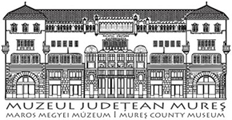Marisia - Maros Megyei Múzeum Évkönyve 25. (1996)
I. Arheologie
22 ADRIAN HUSAR, NICOLETA MAN trellis work or beams and covered with shingle, straws or, rarely, with tiles. The most important construction investigated at Criste§ti is a imposing building6 (Pl.II) -portioned in 16 rooms- which covers a surface of approximately 1600 m2. Four construction stages were identified at this building. The foundation was built of a gravel layer, strengthened with lime, on which there were layed river stones and gritstone pieces, tied in the first two stages with clay, and in the last ones, with mortar. The walls, made of trellis work, were plastered up inside with a stratum of plaster; there were found also small pieces of plastereli painted in red, green and yellow. Some of the rooms of this building -probably the one of the prosperous workshops owner's dwelling- were endowed with hypocaustum, the floor being made of cocciopesto. Thus, this imposing building reveals the fact that at Criste§ti existed some elements of urban comfort -the hypocaustum heating system, painted plastereli etc.- that is the expression of a life standard which is proper to the Roman civilization. Also, the discovery of an overflow sewer7 -build of bricks-, which was explored on 30 m length, could indicate the existence of a sewerage system, as the disposing of the dwellings investigated does not exclude the existence of an irregular street network. Thus, the constructions and the arrangements of public utility at Criste§ti point out the fact that Roman architecture and town-planning elements are present, on a smaller scale, in the rural world, too. At the same time, the settlement of Criste§ti, were the town-planning became manifest as an element of civilization, not as a social-juridical phenomenon, reveals the multiple valences of the life of urban aspect in Dacia. II. THE ECONOMY 1. The Handicraft Production Ceramics The settlement of Criste§ti is known as one of the greatest centres of ceramic production in Roman Dacia. At Criste§ti, the pottery are outstanding, not only by their large quantity, but also by their wide range of shapes, which, implicitly,- leads us to their remote functionality. The 6 furnaces8, together with the abundant pottery material and the numerous moulds discovered, reveal a real local pottery „industry,, 6 A.Zrinyi, op.cit., p.94. 7 D.Popescu, op.cit., p.124. 8 AI.Ferenczi, op.cit., p.217; A.Zriniyi, op.cit., p.93-94.
